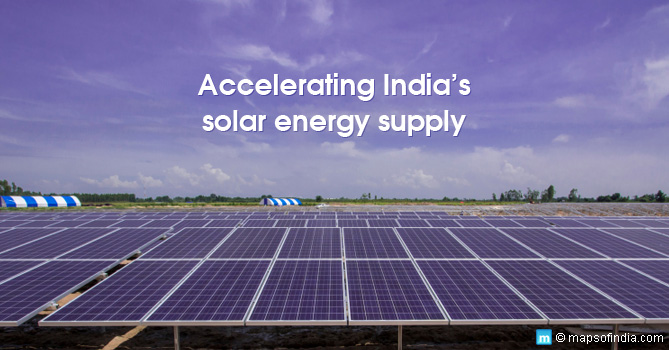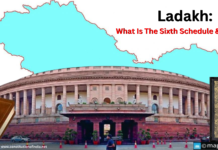India being a tropical country with no lack of sunshine, there is a great scope of harnessing solar power. Considering this fact, the government of India is taking aggressive steps to accelerate the country’s solar energy supply. In fact, huge investments in solar energy facilities have been made in recent years to help meet the needs of our ever growing population. Since the last two years, three villages of India have become fully solar powered.
Dharnai, Bihar
The first solar powered village in India is Dharnai in Bihar. After 33 years of darkness, Dharnai on 20 July 2014 declared itself as an energy-independent village. It is the first Indian village powered entirely by solar electricity. Yes, indeed this was a matter of great pride and achievement not only for the people of Dharnai but for all Indians when more than 300 million people in India live without electricity. While supplying electricity was initially taken up by the state government, unfortunately it failed to do so. For the last 33 years, electricity was not available in the village and people were dependent on kerosene lamps and expensive diesel generators. Located in northeastern Bihar and also on a NH, it had almost all social infrastructure required in a village but the only thing missing was electrical energy. In 2014, the Greenpeace India installed a solar powered micro-grid with the help of two leading NGOs BASIX and CEED. Initially, the project started with installing street lights. After a few months of testing, Dharnai achieved the distinction of becoming India’s first solar powered village. Today, the Dharnai micro-grid serves about 450 homes, housing 2,400 residents, providing electricity in 2 schools, 1 health centre, 1 farmer training centre, 1 anganwadi, 50 commercial shops, water pumps and street lights. A battery stores energy to provide electricity after sun-set. The project has paved the way for a much better life for the people of Dharnai village as a whole.
Kannauj, Uttar Pradesh
Two villages in Kannauj district in Uttar Pradesh are next to join the category of solar powered villages. It is strange but true that even after 68 years of independence, life of the people of Fakirpur and Chanduhar villages in Kannauj came to a standstill after sunset. The reason being these villages had never been electrified. Today, however, there is a change in the scenario. In June 2015, Kannauj was chosen as a part of Akhilesh Yadav-led Samajwadi government’s dream project of providing solar power. A fully-funded initiative of the state government, today these remote villages of Kannauj in UP have solar energy in 450 homes, streets, flour mills to submersible water pumps. This has changed the life of 2,000-odd residents of Chanduhar and Fakirpur.
Baripatha, Odisha
Recently, another small village in India came to the limelight as a solar powered village. This village is Baripatha in Odhisa, a tribal village about 25 km southwest of Bhubaneswar. This is Odhisa’s first solar powered village. The village has 61 households, and a population of about 350 people. Sadly, there was no electricity all these years in this village. Co-funded by ECCO Electronics (a solar products manufacturer) and Jakson Group (a diversified power solutions provider), individual solar units with two lamps were provided in all 61 households. A central one-kilowatt unit that provides electricity to 8 street lamps was also installed. There was an LED television set and a TV set-top box for the community centre installed in this Rs 7-lakh project, which is supposed to be the one of the most low-cost solar energy projects, in the country. In fact this model of low-cost, low-maintenance and community-owned-elements will be replicated to provide power to almost 3,900 villages all over Odisha. What makes the solar project in Baripatha different from other rural solar projects is that in other solar projects there is a central unit which supplies power to all households. In such cases, there are chances of misuse of power or problems like the exposed cables being tapped by villagers. To avoid such problems, individual units have been set up for each household in Baripatha.
It is indeed a matter of shame for all of us that even after so many years of independence and when our country is impressively progressing in science and technology, modern infrastructure, and with more and more emphasis on digitalization, even today more than 300 million people in India are living without electricity. Let us hope that more and more villages follow the examples set by these villages with proper help and support from the state governments, NGOs and power corporations.




